How rising sea levels threaten the lives of Louisianas coastal residents
JEAN LAFITTE, La. – Louisiana’s coastal crisis is already happening.
Scott Sugasti is only 24 years old. And yet, the commercial fisherman has watched dense wetlands in southeast Louisiana steadily disappear from his backyard.
A new United Nations climate report painted a dire picture of the Gulf of Mexico’s future, warning that rising sea levels pose a critical threat for much of coastal Louisiana, including almost 7,000 residents near the bayou communities of Barataria, Crown Pointe, and Jean Lafitte, that are 15 minutes from New Orleans. Sugasti has lived and fished in the area for years.
“Everything has changed,” he told the PBS NewsHour. “Since I was in diapers, I’ve been on this bayou, and I can start remembering stuff since I was 9 or 10 years old, and nothing is exactly the same.”
WATCH: UN releases dire climate report highlighting rapid environmental degradation
Sugasti said he’s noticed changes to the area every single year.
“Bayous have disappeared. We’d go places, and now there is no land left. It’s all open water,” he said. “Sometimes, I can get lost because none of it is familiar.”
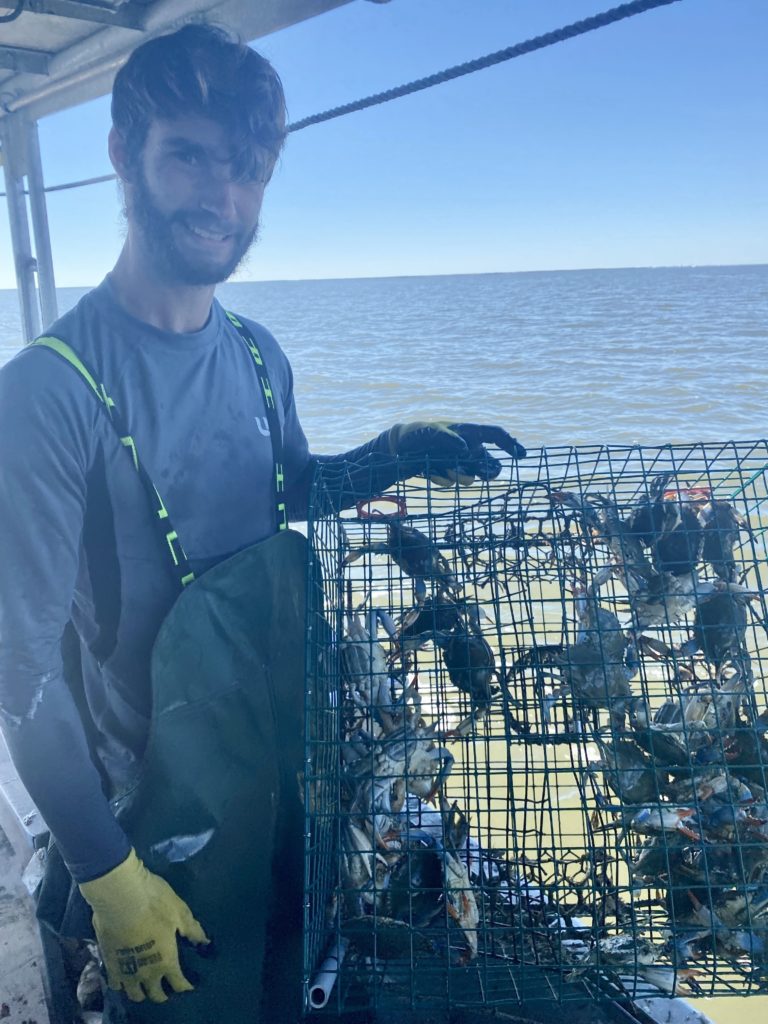
Scott Sugasti of Crown Pointe, La shows pulls up his crab traps. The 5th generation commercial fisherman says sea level rising has already impacted the seafood industry. Photo courtesy of Sugasti family.
Data from the U.S. Geological Survey shows that on average, about a football field’s worth of Louisiana’s precious wetlands disappear every 100 minutes. Although the rate of coastal wetland loss is not a constant, it was once described as one of the worst land-loss crises in the world, according to a 2011 case study.
“People down here are the victims of climate change.”
Before the end of Sugasti’s lifetime, the fishing villages in the Barataria Basin may all wash away with the tide. Still, Sugasti, a fifth-generation fisherman, said he and others will find a way to live with the water as they’ve always done.
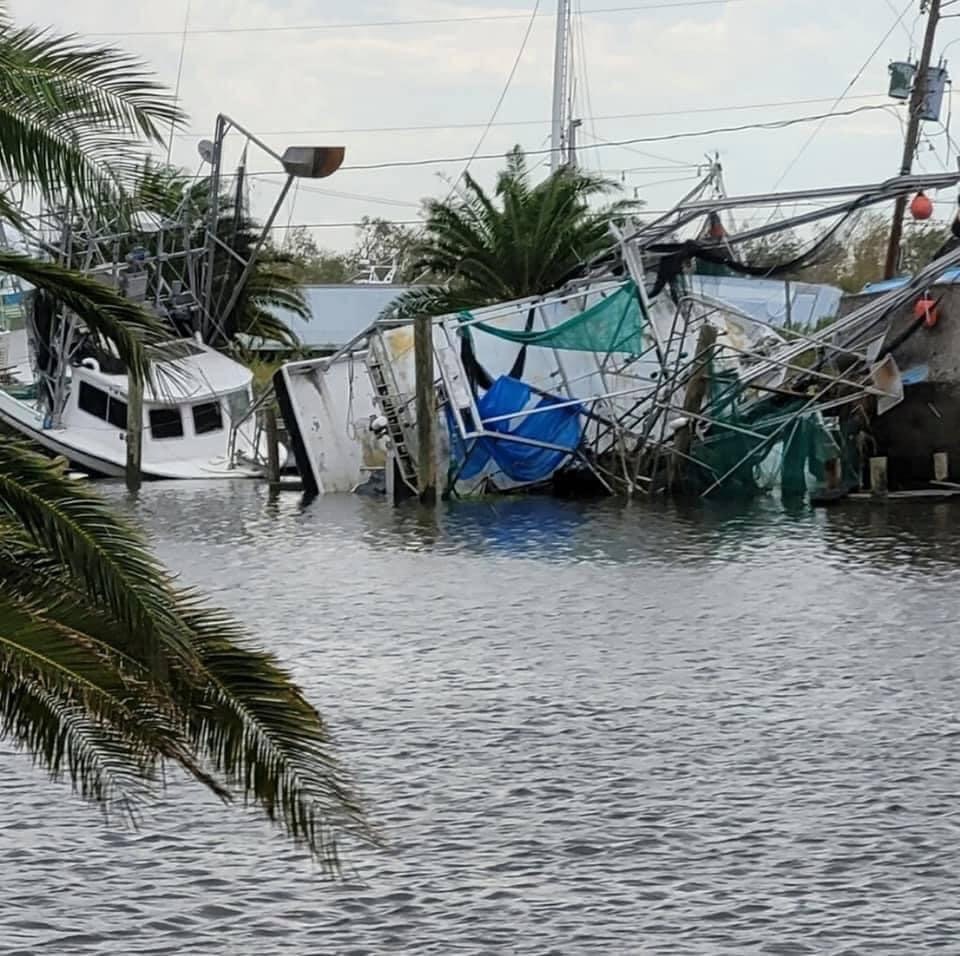
The commercial fishing industry in Lafitte, La was devastated by Hurricane Ida in August 2021. Shrimp boats were left damaged and on land after flood waters receeded. Photo courtesy of Allen Fabre
“People in the government and politics think people are just going to move because these are not adequate living conditions, but these people aren’t going anywhere. The good people here will work it out. They will stay and do what they’ve known their entire lives,” Sugasti said. “Anyone who has done this for a long time is teaching each and every one of their kids to do this, and I will also teach my kids to do this. We’re staying.”
‘Stakes are immense’ in Louisiana
Louisiana, a state vulnerable to hurricanes and storm surges, is facing the brunt of rising waters.
In a recent report from multiple U.S. federal agencies, updated projections for sea level rise found that water levels along the Gulf Coast near Lafitte are expected to rise up 1.5 – 2 feet by 2050. They could also rise an additional 2 feet by the year 2100, according to the 2022 Sea Level Rise Technical Report from the National Oceanic and Atmospheric Administration (NOAA), NASA, among other agencies. Sea levels could continue to rise, if emissions and temperatures are not kept in check. The report, released in February, warns of the effects of current and future sea level rise on coastal communities.
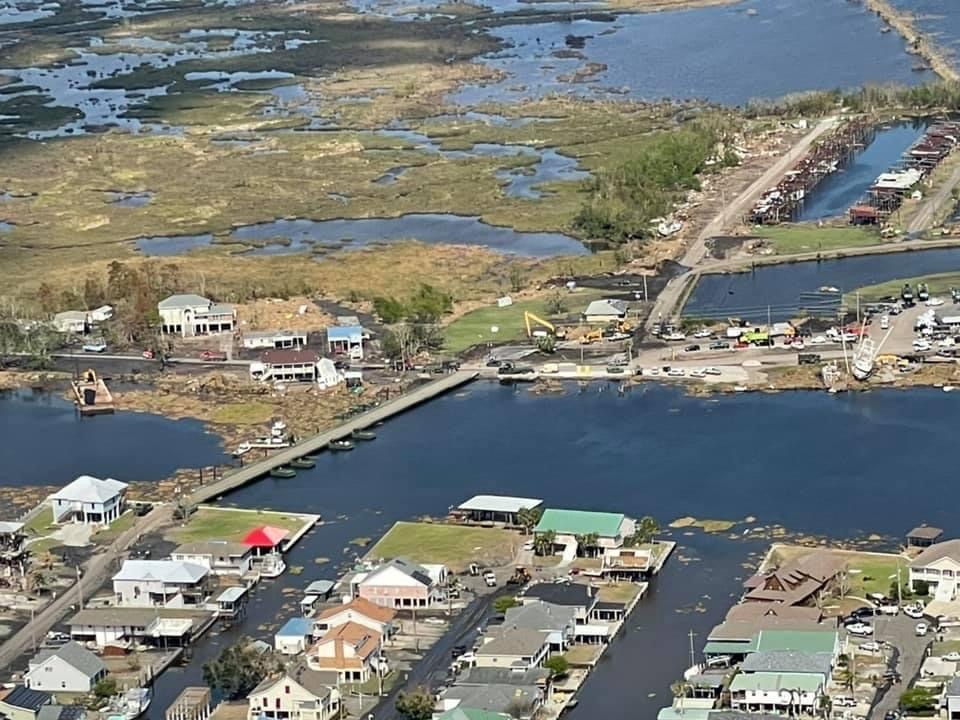
Jean Lafitte mayor Tim Kerner, Jr. flies over the coastal communities near his town to survey the land lost following Hurricane Ida. Many of the coastal communities just outside of New Orleans are threatened by predicted sea level rise of 1.5-2 feet by 2050.
“For Louisiana, the stakes are immense,” Daniel Gilford, a scientist at Climate Central, told the NewsHour. “Not including areas protected by levees, more than 46,000 people live on land within 2 feet of the high tide line. Those 2 feet of additional water threaten more than 23,000 Louisiana homes with an estimated value exceeding $2 billion. And under-resourced communities inevitably bear a disproportionate share of the risks.”
The NOAA Sea Level Rise Viewer allows users to pull up tidal flood prediction maps by zip code and zoom down to see details at the neighborhood level.
The bayou communities of Jean Lafitte, named for a pirate, have lived off the water for generations: fishing, crabbing, oystering, building and repairing boats, bringing supplies, and transporting workers to offshore rigs. Many trace their roots back to the time when the pirate settled in the area or to the 18th century Acadian settlers, whose cuisine and culture are now tourist magnets.
Albertine Kimble, the “Duck Queen of Plaquemines Parish” takes viewers on a South Pass crevasse project tour highlighting how crevasse projects have helped rebuild the Louisiana coast. The project is a collaboration between Ducks Unlimited and local conservation experts to slow wetland loss in Louisiana.
The mayor of Jean Lafitte said his people are hurting, but it’s “not a lost cause.”
“People down here are the victims of climate change. We’re the ones who will be forced to be relocated. It’s unjust and immoral,” said Mayor Tim Kerner Jr. “Everybody in this country contributed to climate change. Everybody drove cars. Everybody took flights. Everyone contributed to the problem, and now the people who live along the coast are being treated as the problem when they should be treated as the victim. We are the ones suffering the consequences.”
Kerner added that the coastal community is “in a vulnerable place, and we’re on the front lines.” Last year, Hurricane Ida made matters worse. State officials estimated that 106 square miles of land and shoreline were devoured by Ida, one of the most powerful storms to hit Louisiana. Only 2020’s Hurricane Laura and the Last Island Hurricane in 1856 have matched Ida’s 150 mph winds in recorded history.
“The coast took a major hit. People are still hurting right now,” Kerner said of Ida’s impact, adding that up to 30 percent of Jean Lafitte’s residents lost their homes in the storm’s aftermath. “I pray that another storm doesn’t hit in the next two to three years.”
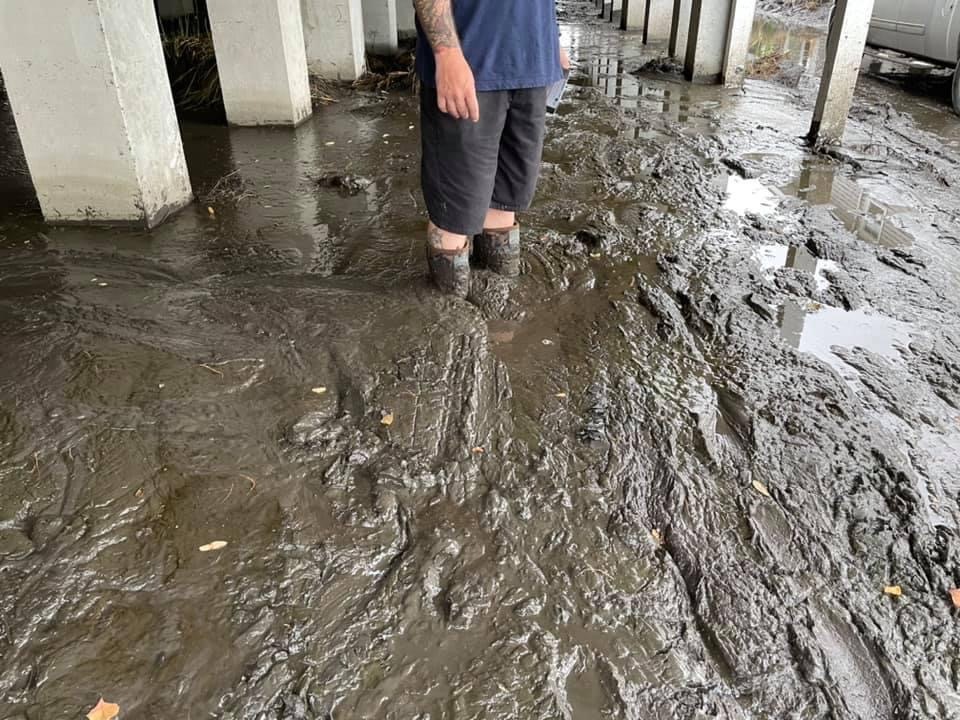
A resident of Barataria, La walks thru ankle deep mud left behind after flood waters from Hurricane Ida receeded. Photo courtesy of Sherry Odom
After Hurricane Ida last year, people were left wading in chest-deep water and traversing through mounds of mud and debris that towered 6 feet above the town’s two-lane highway. Some people still haven’t recovered – physically, emotionally, and financially.
However, there is a glimmer of hope. Kerner said federal and state funding is being spent to better protect Louisiana’s coastal communities. Five major state projects, including 7 1/2 foot levees, are already underway, as he and other leaders continue to fight for new drainage projects.
“Our future of permanence is starting to become a reality. These people are worth saving. Right now, we got a bad wound, and we’re bleeding out, but it feels like we’re wrapping up the wound to stop the bleeding,” Kerner said. “We have to restore the coast for us to have a shot. All the stars are aligning.”
’Some communities’ cannot be saved
The state has set aside $1.3 billion in its 2022-23 budget for hurricane protection and coastal restoration projects, according to the Coastal Protection Restoration Authority Board (CPRA). It’s the state’s largest investment to date to address the effects of climate change. Overall, Louisiana has a $25 billion master plan to deal with sea level rise and flooding, including projects to build levees, pump sediment into sinking areas, and build natural infrastructure.
“We’re building projects that will withstand even higher rates of sea level rise that could play out over the next 50 years,” CPRA chairman Chip Kline said. If water rises, as the 2022 Sea Level Rise Technical Report said, “we have projects that will be more resilient, more sustainable, and perform even better under those environmental scenarios than we anticipate.”
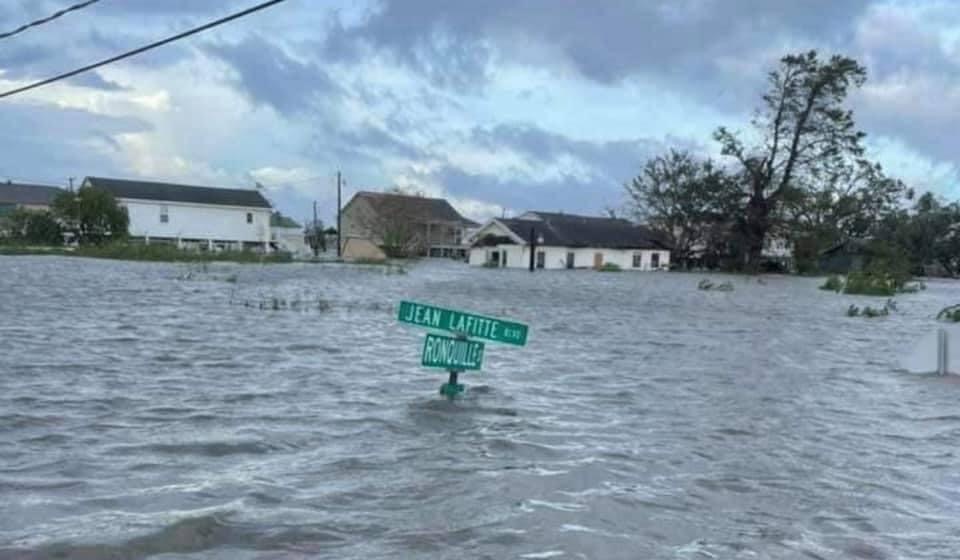
One of the main streets in Jean Lafitte, La flooded during Hurricane Ida. The area is one of many coastal communities 15 minutes from New Orleans which continues to push for more flood protection. Photo courtesy of Allen Fabre
Kline said some skeptics have wondered why the state would spend a billion dollars a year on coastal restoration projects when they’re projected to be washed away with the next storm. For Kline, it’s vital to preserve Louisiana’s working coast and cultural heritage.
“What we saw after Hurricanes Laura, Delta, and Ida – all of the major storms of the last two years – is that these investments paid off,” he said. “They saved lives, but they also proved to be sustainable. It will help preserve the overall productivity of our sportsman’s paradise, which is at the heart of what we do.”
Kline also admitted stark choices eventually will have to be made.
“There are some communities that we simply cannot save. Those are difficult choices. Those are difficult conversations,” Kline said. Once state leaders roll out an updated master plan, “some areas in Southeast Louisiana are currently inhabited now that may not be inhabited in 50 years, but that does not mean that we walk away from them right now.”
Who’s impacted the most by rising waters
In its latest report Monday, the United Nations Intergovernmental Panel on Climate Change (IPCC) stressed the critical need to implement dramatic cuts to greenhouse gas emissions to head off the worst impacts of climate change.
In January, Louisiana became the first state in the Deep South with a climate action plan that calls for cutting emissions by 2050 to achieve net-zero emissions. The plan, which includes clean energy options like wind power, would shift Louisiana’s reliance away from its oil and gas economy.
Gov. John Bel Edwards said it is time, and he’s made sure industry has had a seat at the table.
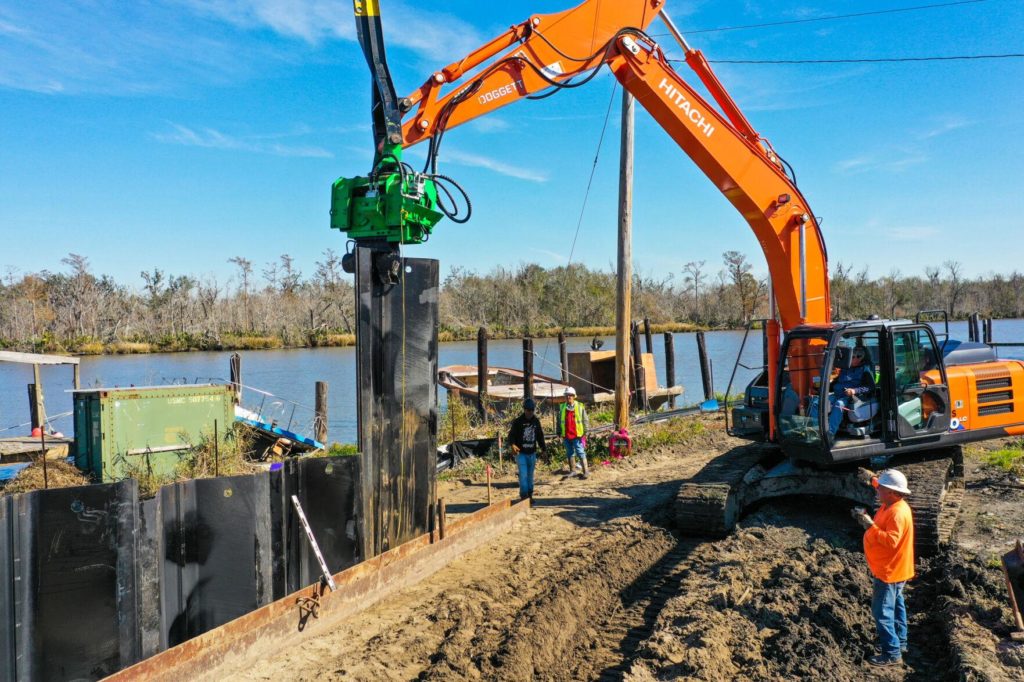
Workers drive sheet piles along Bayou Barataria in Jean Lafitte. It is one of 5 ongoing projects in the area designed to reduce tidal and rainfall flooding in the Rosethorne basin. Photo courtesy of the Coastal Protection and Restoration Authority
“We don’t get to dictate when the next storm hits or how bad it’s going to be. But we can work to mitigate the impacts of climate change,” Edwards said in a March 14 address to the state legislature. “Combating climate change is just as much about economic development as it is about anything else.”
But some Louisiana residents are already escaping the worsening impacts of climate change. According to figures from the U.S. Census Bureau, since April 2020, the state lost more than 27,000 people from its population last year. That’s the sixth-largest percent decline in the country. In the past, there have been other huge population losses. In 2005, nearly 275,000 residents fled the state after Hurricane Katrina made landfall. Some communities have begun to disappear entirely, such as the Native community of Isle de Jean Charles in Terrebonne Parish, which has lost 98 percent of its land to coastal erosion over the past 60 years. The tribal community there is being moved with the help of federal funding. They are considered one of the country’s first official climate refugees.
People will just slowly get strangled out, and we’ll continue to see outward migration out of Louisiana.”
A 2017 University of Georgia study estimated more than 500,000 people will flee the seven-parish New Orleans area by 2100 due to sea level rise and the problems that come with it, including frequent flooding and greater exposure to storm surges.
With climate change, the next half-century promises to deliver human suffering, force a northward migration, and disrupt both the state’s economy and its infrastructure, said Camille Manning-Broome, president and CEO of the Center for Planning Excellence (CPEX), a nonprofit that works with the state on climate adaptation and disaster resilience.
“It feels like a slow death. And then there is some acute shock where there is a larger exodus around storms. People are already migrating from high-risk areas within miles of the state’s eroding shoreline, but it isn’t happening equitably,” Manning-Broome said. “We’re going to need to think creatively about buyouts and human migration. Otherwise, people will just slowly get strangled out, and we’ll continue to see outward migration out of Louisiana.”
Manning-Broome said she worries that there is no vision for what that migration should ideally look like, especially since poor and marginalized communities bear the brunt of all of these shifts. CPEX believes the state should be smart in how dollars are spent by focusing on people who have already experienced the trauma of losing their home and “not into areas that we know have a risky future,” she added.
The biggest gap Manning-Broome sees is on the question of climate-driven human migration.
“We need to resettle whole communities of people equitably,” she said. “From a planning perspective, we have to think about how to equip those receiving communities. We need to be planning for those communities now for people to move to.”
ncG1vNJzZmivp6x7sa7SZ6arn1%2Bjsri%2Fx6isq2eelsGqu81om6Kelp6wtrjTZpqopqaav7St06Kmp6tdnby4edGiqqKml2LApq2MpZyvnZyoerW00Z6YrZ2eYsGpsYyloK%2Bdo2K8p3nLqKyiq5mWu6K%2FjJymmquklrluvsSsoJ2dnqnA